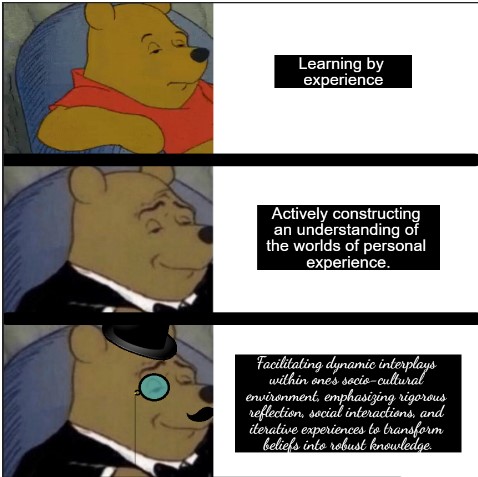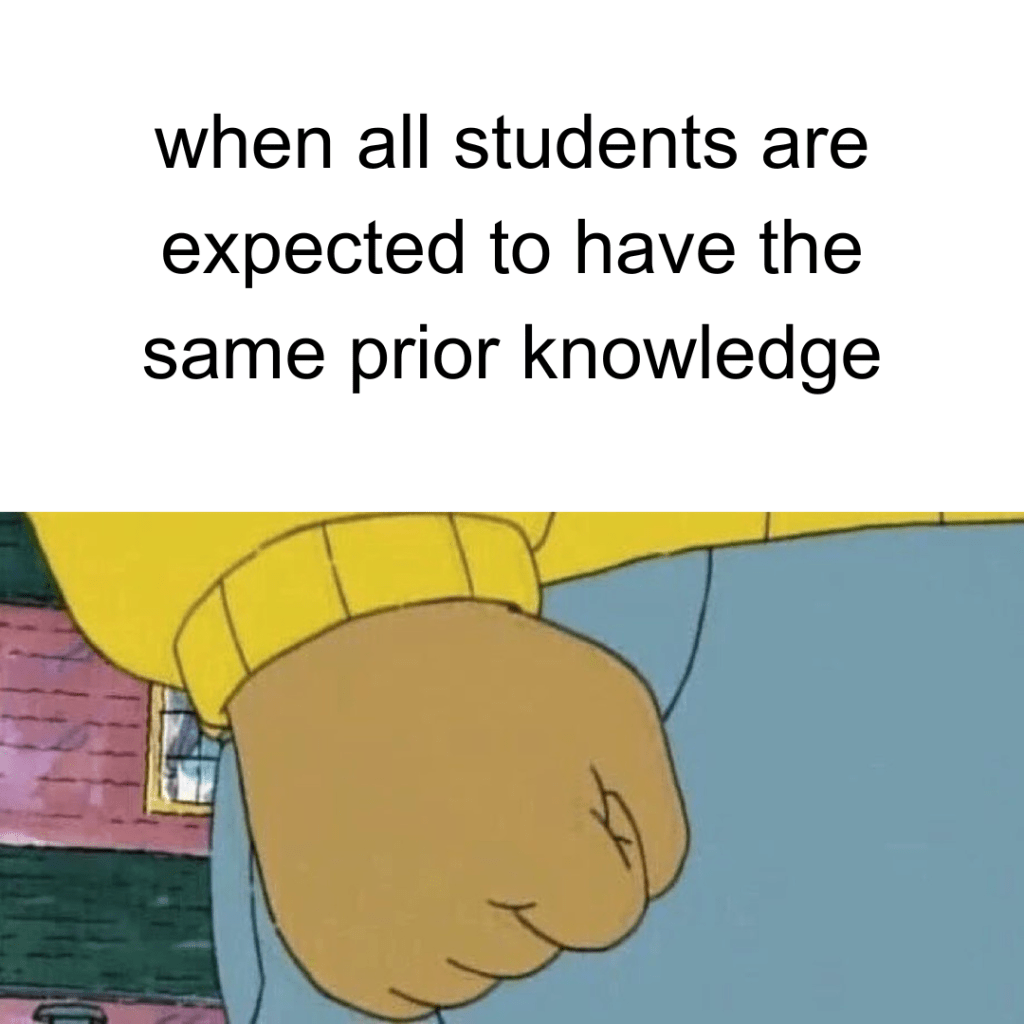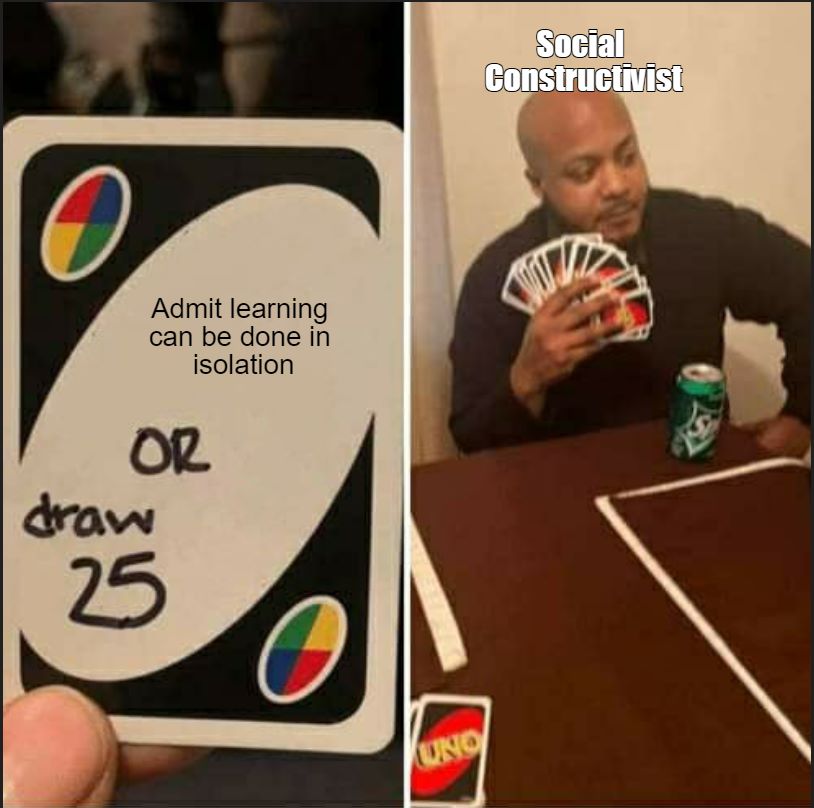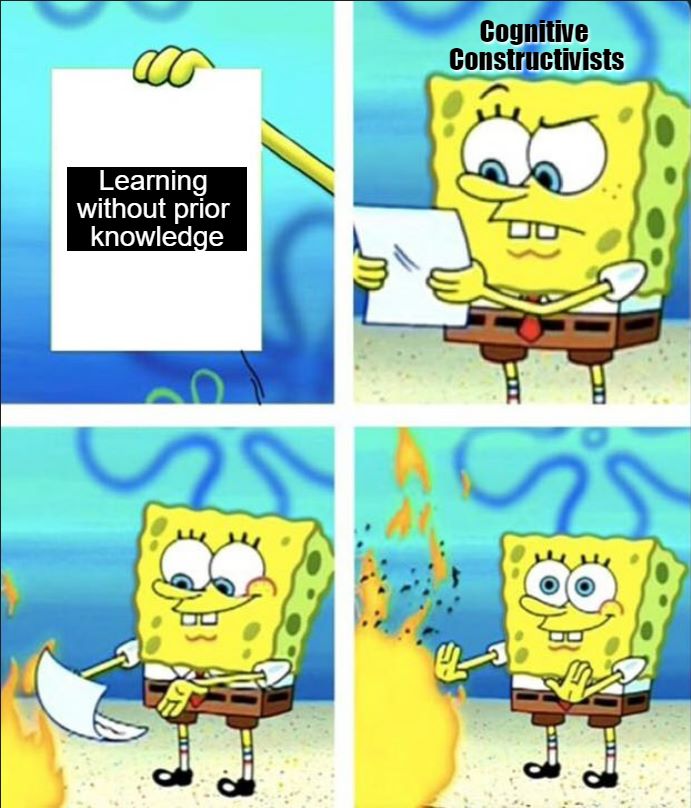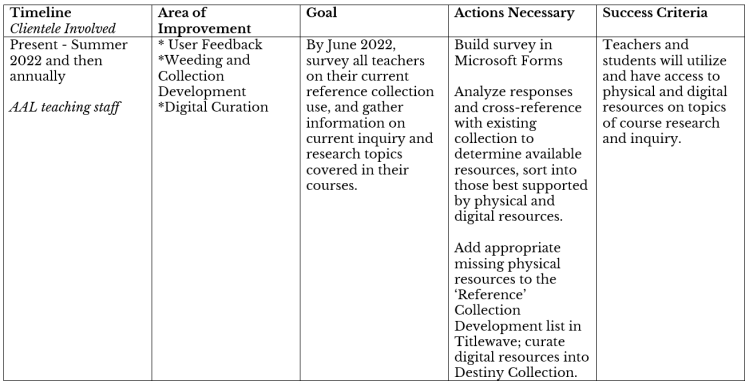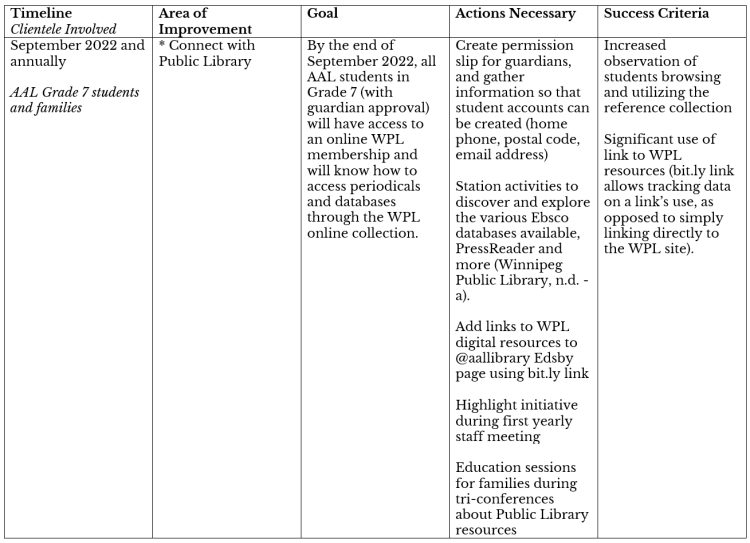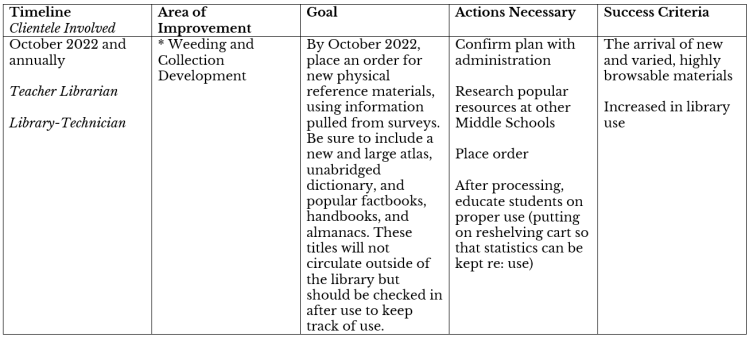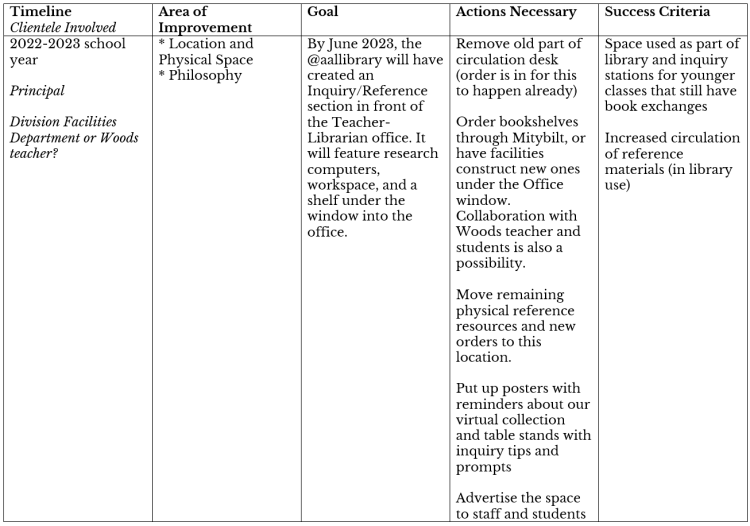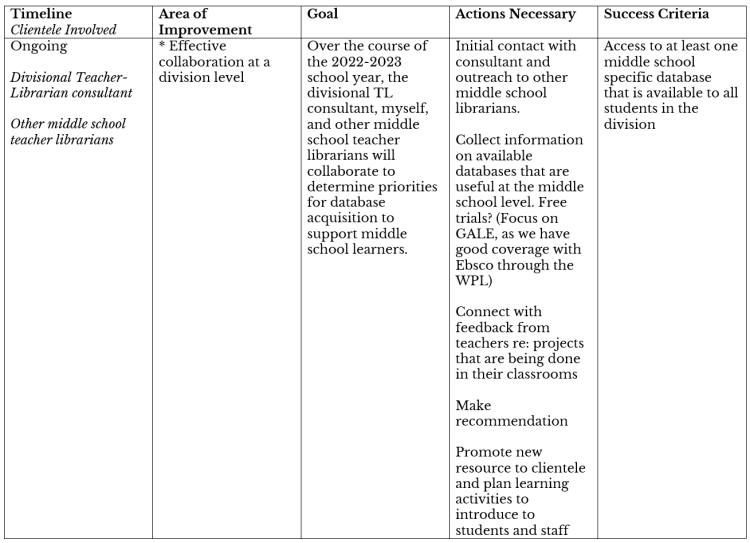Check out this link to take a sneak peak at 13 hours of my life, on what I thought would be a pretty chill, unstructured day. This time, featuring a Pig in Lipstick.
Media Convergence
This week I chose to focus my attention on Media Convergence, and you can view my MindMap on the topic here! Below, you can watch as Bovine Morgan takes you on a journey through his many thoughts about the topic.
Content Prioritization

Alternative Title
“Algorithms; Math Gone Wild”
Here’s a link to my assignment this week. I wanted to embed it directly into my blog, but some features weren’t working that way, and you deserve the full experience. You’ll find my references embedded in my presentation.
‘Artificial’ Intelligence
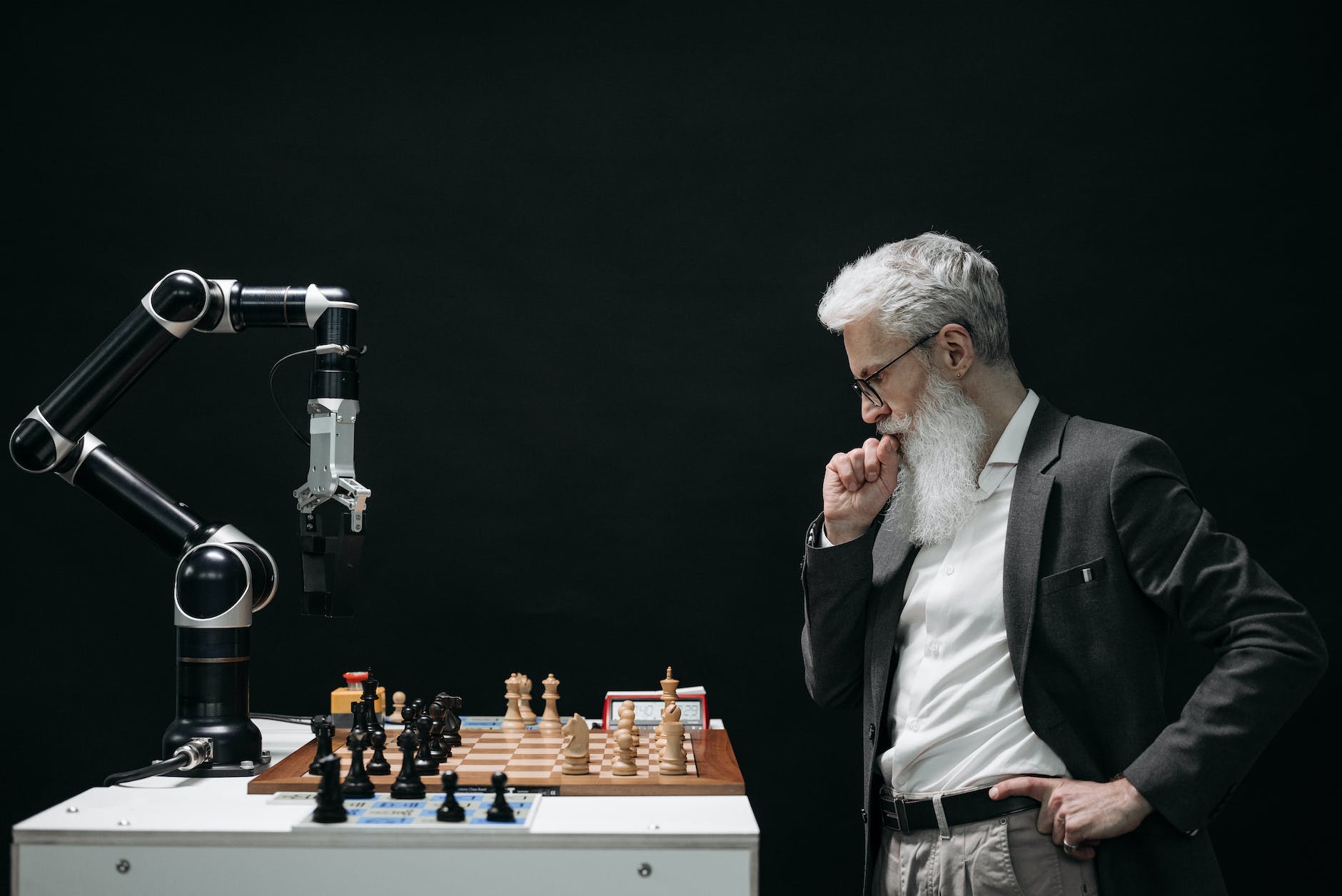
Whose artificial intelligence is it anyway?
I went a bit overboard this week, something I may not be able to sustain long term – but I had a lot of fun putting this together! The animated video and clipart are courtesy of Adobe Express.
References
BBC News. (2016, January 26). AI pioneer Marvin Minsky dies aged 88. BBC News. https://www.bbc.com/news/technology-35409119
Biography.com Editors. (2020, July 22). Alan Turing . Biography. https://www.biography.com/scientists/alan-turing
Buolamwini, J. (2019, February 7). Artificial Intelligence has a problem with gender and racial bias. Here’s how to solve it. Time. https://time.com/5520558/artificial-intelligence-racial-gender-bias/
Chollet, F. (2019). The measure of intelligence. ArXiv. https://arxiv.org/abs/1911.01547
Donovan, P. (n.d.). Herbert Simon: Father of Artificial Intelligence. UBS Nobel Perspectives. Retrieved January 24, 2024, from https://www.ubs.com/microsites/nobel-perspectives/en/laureates/herbert-simon.html
Hao, K. (2020, December 4). We read the paper that forced Timnit Gebru out of Google. Here’s what it says. MIT Technology Review. https://technologyreview.com/2020/12/04/1013294/google-ai-ethics-research-paper-forced-out-timnit-gebru
Harris, A. (2018, November 1). Human languages vs. programming languages. Medium. https://medium.com/@anaharris/human-languages-vs-programming-languages-c89410f13252
Heilweil, R. (2020, February 18). Why algorithms can be racist and sexist. Vox. https://www.vox.com/recode/2020/2/18/21121286/algorithms-bias-discrimination-facial-recognition-transparency
McCarthy, J. (2019). What is AI? / Basic Questions. Stanford.edu. http://jmc.stanford.edu/artificial-intelligence/what-is-ai/index.html
OpenAI. (2024). ChatGPT (GPT-4 version) [Large language model]. https://chat.openai.com/chat
OpenAI. (2024). DALL-E (Version 3) [Large language model]. https://labs.openai.com
Sutton, R. S. (2020). John McCarthy’s definition of intelligence. Journal of Artificial General Intelligence, 11(2), 66–67. https://doi.org/10.2478/jagi-2020-0003
Wikipedia Contributors. (2019, October 15). John McCarthy (computer scientist). Wikipedia; Wikimedia Foundation. https://en.wikipedia.org/wiki/John_McCarthy_(computer_scientist)
Winston, P. H. (2016). Marvin L. Minsky (1927–2016). Nature, 530(7590), 282–282. https://doi.org/10.1038/530282a
But Can You Use It?

Ponderings on Usability
What is usability?
Perhaps it is simpler to view usability through the lens of a stone age technology. The wheel proliferated because it is infinitely usable. To borrow from Issa and Isaias’ usability criteria (2015, p. 33), the wheel was easily understood and adopted across various cultures (learnability). It could be adapted for use in many places (flexibility). When properly designed, it rarely failed (robustness). The wheel significantly reduced the effort required for transportation (efficiency), and its design was simple, effective, easily reproduced, and impossible to forget how to use (memorability). Small imperfections don’t usually effect its utility (error handling), and it made people’s lives better and easier (satisfaction). When we are designing tools for use, usability must be the end goal, or else we are building Rube Goldberg machines; complex machines that perform tasks in indirect and convoluted ways (Wikimedia Contributors, 2019) that are more of a puzzle and pastime for the designer than solutions to widely held problems or ways to improve quality of life.
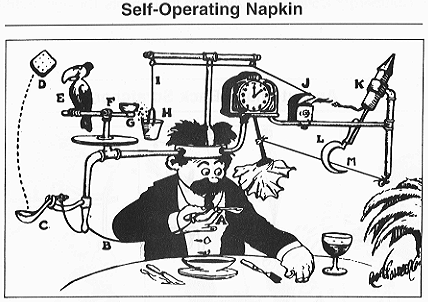
What about educational usability?
From an educational lens several ideas are missing. Unlike the profit-driven motives of the free market, which often lead to excluding certain users in technology design, the education system prioritizes inclusivity, catering to diverse learning needs, and supporting both teaching and learning processes. When technologies have been designed for commercial usability rather than educational, educational outcomes and learning effectiveness are often sacrificed. Adding features necessary for ensuring support for different age groups, modes of learning, technological proficiency and integration with learning standards are not marketable in the same ways.
Data privacy is another concern. Individuals of legal age can consent to technology use and data terms, but schools must prioritize student data privacy, often facing higher costs for technology that adheres to these standards, unlike commercial tech subsidized through data sale (Canadian Centre for Cyber Security, 2023). Ultimately, one could define educational usability as technology that meets Issa and Isaias’ criteria on top of being ethically responsible and inclusive, which prioritizes the learning process, and recognizes the financial and security challenges that are unique to the educational field.
When usability studies go wrong
User-centred design is integral . Woolgar effectively argued that in his observed usability study, he saw the configuration of the user to the technology. This is problematic because it can lead to a notable mismatch between user needs and the technology, resulting in a product that is difficult to use, or doesn’t serve the problem it is intended to address. It also leads to potential user frustration and disengagement because they are forced to adapt to a system that doesn’t align with their natural behaviours, expectations, and motivations.
One issue that stood out for me was the very close presence of testers during the process. The testers were physically in the space and verbally guided the users along the way, telling users when they could give up, or providing positive reinforcement to encourage useful behaviours like reading a manual (Woolgar, 1990, p. 85). Would users outside of this ecosystem persist in their use of the technology, and where would users genuinely struggle? Configuring the users muddies the water.
Woolgar highlighted the insider/outsider contrast, with insiders like tech support often surprised by outsiders’ real-world use of technology, exemplified by simplified computer instructions posted in a school computer lab. (Woolgar, 1990, p. 72). The sheer depths of knowledge and experience of designers act as blinders to the everyday needs of average users, who may not share the same level of expertise or perspective. Perhaps a better process for usability testing would have helped create a device that was more intuitive.
Usability over time
Woolgar’s points on usability are particularly relevant when considering the DOS-based 286 computers he references in 1990, which, due to their novelty and hardware constraints, necessitated user adaptation and lacked key usability aspects like learnability and satisfaction set out by Issa and Isaias 25 years later. It is likely that in Woolgar’s case users legitimately needed to be configured. Now that technology is ubiquitous, and screen recording technology/keystroke-logs exist we can now take the lessons learned from Woolgar and apply them in a way that helps users configure the tech rather than vice versa. Testers no longer need to physically be in a room with those doing the testing, as we can gather helpful data virtually. In Woolgar’s case, usability studies were an end of process project to be completed shortly before heading to market, whereas Issa and Isaias frame usability evaluation as a recursive process of prototype releases; this is a significantly more proactive, user-centric approach. Ultimately, when read together these pieces highlight how important it is that our conceptions of usability do not remain static.
References
Canadian Centre for Cyber Security. (2023, August 4). Protecting your information and data when using applications- ITSAP.40.200. Canadian Centre for Cyber Security. https://www.cyber.gc.ca/en/protecting-your-information-and-data-when-using-applications-itsap40200
Goldberg, R. (1931). Self-operating napkin [Comic]. In Wikimedia Commons. https://upload.wikimedia.org/wikipedia/commons/a/a9/Rube_Goldberg%27s_%22Self-Operating_Napkin%22_%28cropped%29.gif
Issa, T., & Isaias, P. (2015). Usability and Human Computer Interaction (HCI). In Sustainable Design (pp. 19–36). https://doi.org/10.1007/978-1-4471-6753-2_2
Wikipedia Contributors. (2019, April 10). Rube Goldberg machine. Wikipedia; Wikimedia Foundation. https://en.wikipedia.org/wiki/Rube_Goldberg_machine
Woolgar, S. (1990). Configuring the user: The case of usability trials. The Sociological Review, 38(1_suppl), 58–99. https://doi.org/10.1111/j.1467-954x.1990.tb03349.x
Historical Primary Source Analysis
![A typewritten cover on orange paper.
Document is entitled "Indian Education in Manitoba; information for educaters [sic] & band officials"
The document was published by the Department of Indian Affairs and Norther Development's Manitoba Regional Office - Education Division, and was published in 1972.](https://themarksey.ca/wp-content/uploads/2024/01/screenshot-2024-01-15-172158.png?w=230)
Preface
It is crucial to understand that marginalized populations are often constrained by the systems imposed by the dominant culture, through no fault of their own. What follows aims to offer a historical perspective on how these communities can become entangled in their own marginalization while trying to effect change from within systems that have historically excluded them or limited their access.
Original Question
What kind of information is provided in early documents about Indigenous Education in Manitoba seemingly endorsed by Indigenous groups?
Search terms
- “Indian” – as I am searching for an early document around Indigenous education in the Province of Manitoba I am restricted to using the terminology of the time period
- “Education”
- “Manitoba”
Document Source
My initial search was completed using the Government of Canada’s Publications catalogue. Using my search terms, I was able to uncover a document entitled “Indian education in Manitoba: information for educaters [sic] & band officials”, which was published in 1972 by the Department of Indian and Northern Affairs. The document starts with a 2-page letter of introduction from the Manitoba Indian Brotherhood, the forerunner of the current Assembly of Manitoba Chiefs (Manitoba Historical Society Archives, 2022).
Initial Analysis
* I did not include uses of the word Indian when referring to organizations/groups like the Manitoba Indian Brotherhood or the Department of Indian Affairs, or in document titles.
* Only the main body text was analyzed, not appendices.

Added to the original search terms, I included the names of Indigenous Nations in the province of Manitoba, both as used by most groups themselves currently as well as historical terminology, which is recorded in quotation marks in the chart above. Interestingly, while terms used to represent the entirety of Manitoba’s Indigenous population were used well over 140 times, names specific to a cultural group were only mentioned a total of 14 times, and only in instances referring to language. Anishininiimowin (Oji-Cree) identity is completely unreferenced. Given the several times the document refers to the importance of cultural understanding (see paragraph 3 on page 107 for example) on the part of non-Indigenous peoples, this seems like a notable discrepancy. The prevalence of generalized terms over specific cultural group names suggests a broad-brush approach to Indigenous identity within the document, which contrasts with the expressed emphasis on cultural understanding. This raises questions about the depth and authenticity of the cultural awareness and sensitivity claimed in the document.
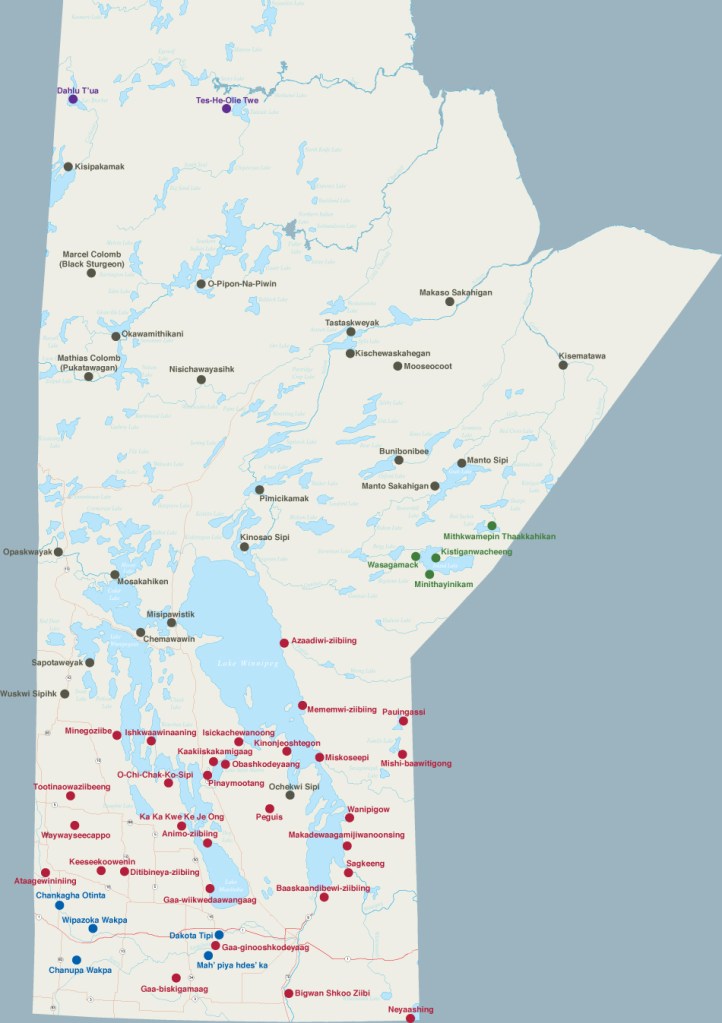
The map above shows the heterogeneous nature of the Indigenous communities within the Province of Manitoba. (MFNERC, 2015)
In my initial review of the document, several aspects stood out, particularly in light of historical context:
- References to Residential Schools: The document frequently mentions residential school facilities, detailing their amenities and procedures for enrolling Indigenous students. This is particularly striking given the traumatic legacy of these institutions in forcibly assimilating Indigenous children, a practice now widely recognized as part of Canada’s colonial history.
- Mentions of the Child Welfare System: There are notable references to the child welfare system, including contacts for agencies to be alerted if there were concerns about the welfare of Indigenous children. During this period, welfare agencies were actively involved in the removal of Indigenous children from their families for adoption into non-Indigenous homes, a practice later termed the Sixties Scoop (Sinclair & Dainard, 2021). The legacy of this system still has a residual hold on us; national Canadian data shows that over 50% of children in foster care today are Indigenous, in Manitoba that number is closer to 90% (Hobson, 2022)
The broad-brush approach to all Indigenous groups, and the references to residential schools and the child welfare system made me think about the ways in which marginalized populations are often positioned within dominant societal narratives, particularly in historical contexts. It highlights a systemic approach to managing Indigenous affairs that prioritizes assimilation and control over the preservation and respect of diverse cultural identities.
In terms of its impact on teacher professional development, I think that it was probably progressive for its time. Unfortunately, I still think that it would have reinforced stereotypes and encouraged stigmatizing and problematic behaviours from non-Indigenous readers. On one hand, historically used derogatory terminology is absent (with the notable exception of settler names for some Indigenous groups), but from a modern lens the frequent use of the term Indian is jarring. The document explains that intelligence tests cannot be removed from culture (p. L1) and gives some attention to the importance of cross-cultural training (p. C3). But ultimately, the information contained within reflects the values of the dominant Manitoban culture, and reinforces systems that continued to do significant harm to Indigenous people. Much of the document is about funding allocations, welfare concerns, and different residential school locations.
Updated Question
How does the 1972 ‘Indian education in Manitoba’ document, despite its endorsement by Indigenous organizations, fail to reflect the complexities and realities of Indigenous education and cultural practices of the time?
Analysis
The opening note from the MIB sets out goals of educational autonomy and Indigenous control of their own education, ultimately a push back against the system. The final line of Verna Kirkness’ letter stating that the document that follows “will… provide you with the information on ‘things you have always wanted to know about Indian education but were afraid to ask’” makes no qualifiers on the quality of the information, and its use of quotation marks strikes me as an indication of MIBs critical stance on the material included within. However, the rest of the document presents a systemically aligned perspective on Indigenous education. From the uncritical eyes of non-Indigenous readers, this could be seen as acceptance.
Ultimately, the document remains a product of its systemic context. Its portrayal of residential schools is notably softened, a stark contrast to the more troubling accounts that have emerged since. For example on page 36 of the document, it simply says that it became evident that it was “not desirable” to remove children from families, and speaks of the benefits of Day Schools, racially segregated schools that served to assimilate Indigenous students in conditions that were frequently abusive, staffed by unqualified and non-Indigenous teaching staff and the subject of a significant Class Action Lawsuit finalized in the year 2019 (Pind, 2023). Traditional spirituality, family organization, and cultural practices are conspicuously absent from the discussion; material which quite literally is information teachers and educators should know about Indigenous education. Furthermore, the document not only encourages but also provides the necessary contacts for readers to engage with existing child welfare systems. This guidance subtly positions Indigenous families under the scrutiny of non-Indigenous systems, reflecting a lack of recognition for their autonomy and cultural integrity.
Reflection
My interest in this topic stems not only from the importance of understanding historical context in the process of Reconciliation but also from my personal identity as a member of the 2SLGBTQIA+ community and my background in social history. Like Indigenous advocacy groups, early 2SLGBTQIA+ rights groups, such as the Mattachine Society, The Daughters of Bilitis, and ONE, Inc. in the United States, and the Gay Alliance Toward Equality in Canada, faced similar challenges as a historically marginalized population struggling to gain public acceptance. These groups often adopted a strategy of respectability politics, which included things like members being forced to adhere to the acceptable gender norms of the time to avoid being labeled as deviant. For instance, having a ‘friend’ was considered acceptable, but openly describing an intimate relationship with a same-sex partner was not, as noted by Case in 2020. This approach created a divide within the marginalized communities between those who conformed to these norms and those who either could not or chose not to do so.
If we apply a definition of ‘respectability politics’ as the way in which more privileged members of marginalized groups attempt to agree with and promote mainstream cultural norms to advance their group’s condition (Dazey, 2021) then it becomes clear that this strategy, while offering potential short-term gains in acceptance and rights, can also perpetuate long-standing inequities and internal divisions. It is from this lens that I have analyzed the following document. What becomes clear is that systemic change alone is not enough to effect true and lasting societal transformation. While changes in policy and practice are crucial, they must be accompanied by a deeper shift in societal attitudes and a genuine acknowledgement of the diversity and autonomy of marginalized groups. In the case of the document I analyzed, the focus on institutional structures like residential schools and the child welfare system, even when ostensibly endorsed by Indigenous groups, reflects a top-down approach that does little to empower these communities or respect their cultural uniqueness.
Ultimately, what I will take from my reading of this document is the critical need for direct and authentic engagement with specific Indigenous communities, rather than solely relying on broad systemic approaches. True progress hinges on listening to and learning from these communities themselves, ensuring their voices and specific cultural needs are at the forefront of any educational and policy development.
References
Canadian Encyclopedia. (n.d.). Timeline LGBTQ2S . https://www.thecanadianencyclopedia.ca/en/timeline/lgbtq2
Case, M. (2020, July 15). ONE: The First Gay Magazine in the United States. JSTOR Daily. https://daily.jstor.org/one-the-first-gay-magazine-in-the-united-states/
Dazey, M. (2021). Rethinking respectability politics. The British Journal of Sociology, 72(3), 580–593. https://doi.org/10.1111/1468-4446.12810
Department of Indian Affairs and Northern Development. (1972). Indian education in Manitoba: Information for educators & band officials. https://publications.gc.ca/collections/collection_2018/aanc-inac/R44-134-1972-eng.pdf
Hobson, B. (2022, September 21). More than half the children in care are Indigenous, census data suggests. CBC. https://www.cbc.ca/news/canada/manitoba/census-indigenous-children-care-1.6590075
Manitoba Historical Society Archives. (2022, October 26). Manitoba organization: Manitoba Indian Brotherhood / Assembly of Manitoba Chiefs. https://www.mhs.mb.ca/docs/organization/assemblymanitobachiefs.shtml
MFNERC. (2015). Traditional First Nation Community Names. https://mfnerc.org/community-map/
Pind, J. (2023, August 23). Indian Day Schools in Canada. The Canadian Encyclopedia. https://www.thecanadianencyclopedia.ca/en/article/indian-day-schools-in-canada
Sinclair, N. J., & Dainard, S. (2021, February 17). Sixties Scoop. The Canadian Encyclopedia; The Canadian Encyclopedia. https://www.thecanadianencyclopedia.ca/en/article/sixties-scoop
Knowledge, Learning, Constructivism

But what about the truth?
Our discussions of knowledge and constructivism often focus on the elusive idea of truth. And it’s not surprising, because so much of our lives depend on the truths that others have decided for us, and the truths we have made for ourselves. For example, when people experience conflict, we ask them what actually happened, and they are often judged and given consequences based on the information they provide, despite the fact that the limitations of human cognition mean that we will almost inevitably be missing, misconstruing, or misrepresenting information. The emphasis on truth also isn’t surprising, because some of our earliest philosophical musings about what constitutes knowledge defined it as “justified true belief” (Pritchard, 2014, p. 22).
Constructivism is a framework for explaining how people learn. Cobb points out two main trends in constructivist research: one that students are actively constructing an understanding of the worlds of their personal experience; the second that focuses on the “social and cultural”-ness of everything that we do (2005, p. 87). Although these views can seem conflicting, neither directly addresses the concept of truth.
Over the millennia that humans have been questing after it, we have developed some significant methods for determining theoretical truths thanks to the use of the scientific method and other well established and rigorous patterns of logic and observation. To borrow from Dr. Taber, we can build a good picture from clues, and we can test these expectations against future experience and make revisions. And from this, we can learn a lot about the world (2020).
Perhaps part of the problem is that both knowledge and belief have instrumental value, with knowledge typically being seen as having greater value (Pritchard, 2014, pp. 12-13). This value is not just inherent; it is socially constructed and reinforced. When we hold a particular belief and find ourselves within a community that shares that belief, we derive a sense of belonging, validation, and even identity from it. Even if a belief is later found to be inaccurate, the process of altering that belief can be complex and emotionally taxing, not merely because of cognitive inertia but also due to the social ramifications it may entail. Taber (2020) hinted at this when he spoke of how we often interpret our experiences to fit our inherent cognitive biases. This is where constructivism’s emphasis on the social dimension of learning becomes crucial.
Constructivism posits that learning isn’t merely an act of individual reflection and experience; it also involves a dynamic interplay with one’s physical and social environment. In essence, our thoughts, and thereby our learning and knowledge, are influenced by our culture. However, they also challenge it, gradually altering its boundaries (Fosnot & Perry, 2005, p. 71). Some theories draw parallels between evolutionary processes and individual learning, suggesting that personal learning can be understood as a result of activity and self-organization. This, in turn, leads to the development of cognitive structures (Fosnot & Perry, 2005, p. 79). As learners engage with their community, they may initially form beliefs based on shared experiences or the prevailing views of that community. The task for educators, then, isn’t just about correcting misinformation but facilitating environments where learners can collaboratively refine, challenge, and cross-check these beliefs. Through rigorous reflection, social interactions, and further experiences, these beliefs can then be transformed into more robust knowledge. Recognizing the social weight of beliefs and their potential to evolve underscores the importance of fostering learning environments where beliefs can be openly tested, questioned, and refined into truths that are more universally applicable.
I think one of the things that I will take from this course is the understanding that I must continue to question things. What do I consider acceptable forms of knowledge; what are acceptable ways to show and share it? The ideas that I have privileged may be the products of social and cultural beliefs rather than rationally supported understanding. Barbara Stewart Edwards spoke to this in her week 7 post : “Within diverse classrooms rich with ‘funds of knowledge,’ constructivist strategies that utilize diverse knowledge well, will not only serve to engage all its learners, but cultural understandings and sensitivity will also develop. Empathy, a trait said to be lacking in many of our 21st century learners, will be awakened.”
Please enjoy these memes that I created based on constructivist principles and in synthesis of course readings.
References
Cobb, P. (2005). Where is the mind? A coordination of sociocultural and cognitive constructivist approaches. In Constructivism : Theory, Perspectives, and Practice. Teachers College Press.
Fosnot, C. T., & Perry, R. S. (2005). Constructivism: A psychological theory of learning. In Constructivism : Theory, Perspectives, and Practice. Teachers College Press.
Pritchard, D. (2018). What is this thing called knowledge? Routledge.
Taber, K. (2020). Constructivism – the good; the bad; and the abhorrent? In edcp.educ.ubc.ca. https://edcp.educ.ubc.ca/constructivism-the-good-the-bad-and-the-abhorrent/
Learning Theories
It’s been awhile! Since finishing up my T-L post-bacc through UBC I’ve started up on my Master’s Degree, also through UBC in their Educational Technology (MET) Program. And I spent so much time putting this Learning Theory Concept Map together that it should get to see someone else’s eyes other than my instructor’s.
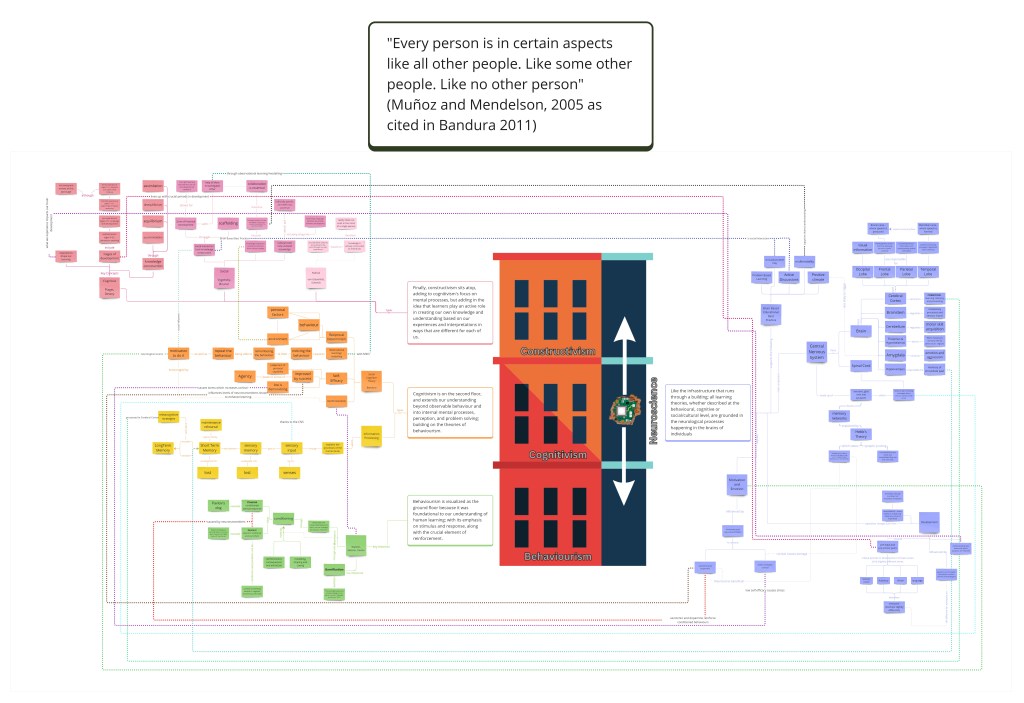
Deep Data, Databases, and Dictionaries – oh my!

A glimpse through my thoughts on reference materials in the LLC
These past five weeks have taken us on a crash course of learning, including on a multitude of topics that I will admit I hadn’t thought of before (at least when thinking about our school’s collection). Was I aware of indexes? Yes. But had I thought of ensuring that we have access to them? Not really. I honestly kind of lumped them together with databases in my mind. Taking this course has been necessary for the growth of my understanding and practice. I’ll highlight some key takeaways and thoughts from some of the lessons of this theme below.
Lesson 8: Digital Resources
I’m not sure how much the deep web will be applicable to reference collection use in the middle school where I work, but I appreciated the reminder that Google (despite its advertising and market share), does not know all. A significant portion of the web remains hidden from search engines (Research Help: Finding Information on the Web: Invisible Web, 2019). Fundamental search skills need to be taught. This includes vocabulary and keyword searching for use with search engines, but also how to move through a website and find what you are looking for. It reminds me of research that I’ve read on how people view a web page (Pernice, 2017) – and it makes me wonder 1) whether the digital reference resources that we include in our collections have been designed with this in mind and 2) why I’m not teaching website browsing skills more directly.
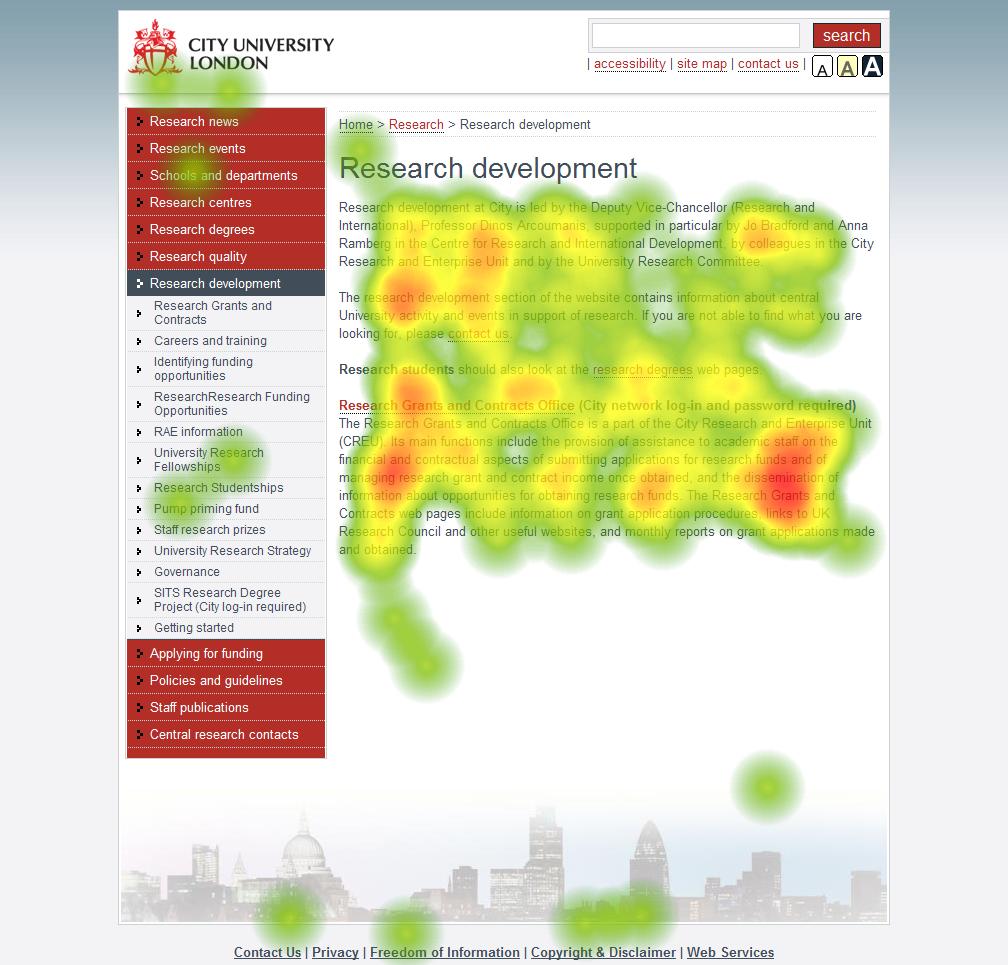
image CC2.0 from wikimedia commons
Lesson 9: Databases and Lesson 11: Encyclopedias
These modules, although on different content, had me asking some of the same questions – how do we make accessible information a priority?
Both databases and encyclopedias come with some significant readability issues. In my earlier analysis of World Book Online and Encyclopedia Britannica School, even the most basic levels of text were written at a grade 8 level. A search through Explora Canada, an elementary level database from Ebsco that I access through my Winnipeg Public Library card, often only gives HTML full text, which removes any visuals that went along with an article. Both issues severely impact a student’s ability to understand complex text. Translation is less of an issue with digital encyclopedias, but databases still seem to be heavily English only.
A note on Wikipedia
This will be of no surprise to anyone who has read any of my discussion posts; but there’s just something so inspiring to me about Wikipedia. It’s often more general, more readable, and written in more languages than its academic counterparts. The Simple English Wikipedia is especially useful. To me, it speaks to the idealism of the early internet as a place where we could all come together, share and learn, regardless of our educational opportunities or socioeconomic status. I’d agree with Nancy O’Neill that it’s the ideal starting place for picking up the terminology, important names, and to give you a general feel for a subject (Berinstein, 2006).
Lesson 10: Bibliographies, Biographies, and Directories
My biggest takeaway from this theme was that I could be doing more work to support, compile, and develop bibliographies for student research. Many of the bibliographies referenced in the Riedling and Houston text were aimed at more senior students. Finding information on the internet is a complicated process, and I’m beginning to think that we are throwing early middle school students into the deep end to find information on topics that they have little understanding (or interest in) and that it is probably impacting their understanding of that content. Perhaps student directed topics are the place to teach ‘searching for information’ skills. When it comes to more specific content where students may not have the necessary background knowledge, I think that curated resources are more useful.
References
Berinstein, P. (2006, March). Wikipedia and Britannica: The kid’s all right (and so’s the old man). The Searcher. https://www.infotoday.com/searcher/mar06/berinstein.shtml
Pernice, K. (2017, November 12). F-Shaped pattern of reading on the web: Misunderstood, but still relevant (even on mobile). Nielsen Norman Group. https://www.nngroup.com/articles/f-shaped-pattern-reading-web-content/
Research help: Finding information on the web: Invisible web. (2019, August 14). Asbury.libguides.com. https://asbury.libguides.com/c.php?g=65758&p=424014
Riedling, A. M., & Houston, C. (2019). Reference skills for the school librarian : tools and tips. Libraries Unlimited.
Making Reference a Priority

; bringing the @aallibrary reference collection into modernity and relevance
Reference collections and services are an integral part of any Library Learning Commons. The collection itself has traditionally been defined as a physical section of the library that holds print copies of materials that are not allowed to circulate outside of the library, to keep them on hand for client questions and research (University of British Columbia, n.d.). Services include helping define the information needs of users, creating environments for learning and collaboration, teaching students how to use reference resources, and differentiating good reference materials from bad ones (Riedling & Houston, 2018, p. 2). Good reference services require access to a reference collection that meets the needs of a building’s clientele, and the development of all good services is done through conscientious observation, user feedback, planning, and execution. While reference services have been more static over the last 20 years, the reference collection has changed drastically. So how do we support developing library users into informationally literate citizens? The first step is to ensure the building and maintenance of a collection of physical and virtual materials that are responsive to the needs of our school communities. What follows is a plan for the continued development of the AAL Library Learning Commons reference collection in a way that will help guide students towards becoming informationally literate citizens.
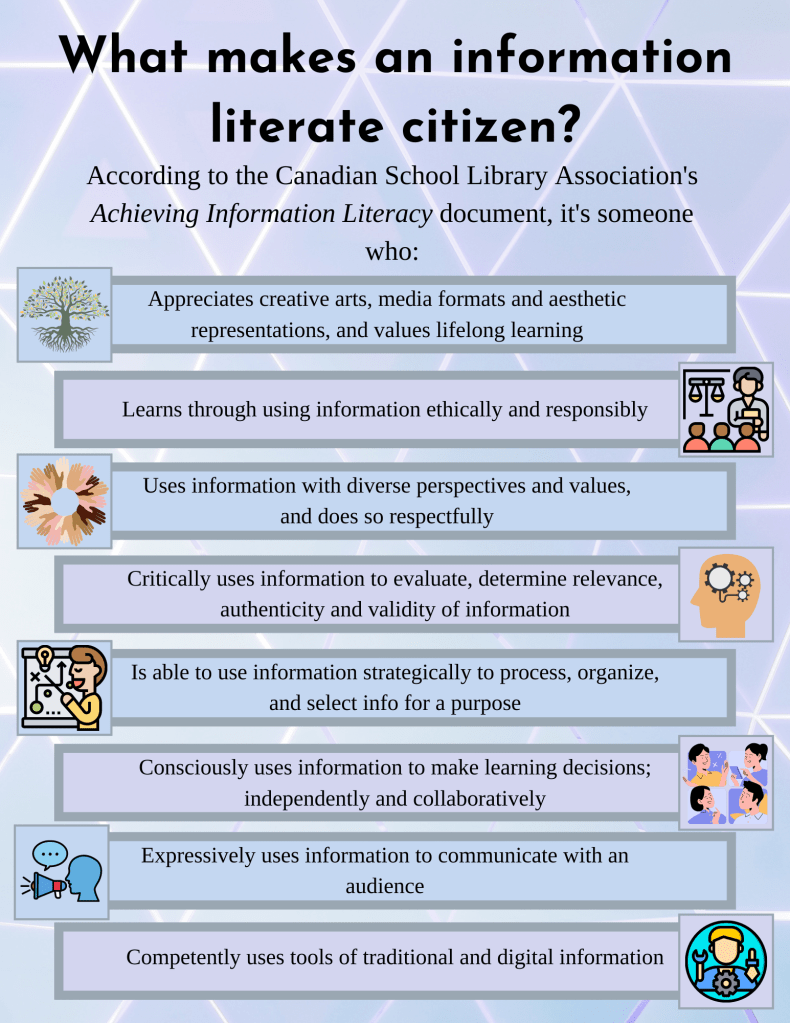
When this kind of work is being done, we refer to various standards set by professional organizations that help inform our practice; in this case the Canadian School Library Association’s Achieving Information Literacy (AIL), which sets standards for School Library collections, including reference ones. Another document heavily used in this plan is Riedling and Houston’s 2019 Reference Skills for the School Librarian (Fourth Edition).
Where We Are At Currently
The Physical Reference Collection
Riedling and Houston include the following materials as important to a reference collection; bibliographies; factbooks, directories, almanacs, yearbooks, and handbooks; biographical sources; dictionaries; encyclopedias; geographical sources; periodicals and specialized databases. Only several are present in our current physical reference collection, which has mostly been disbanded over the past five years. Most materials have had their spine labels edited to remove REF and been shelved in the appropriate Dewey section – most notably factbooks like our Guinness Book of World Records. 101 items remain with a REF spine label, which are kept on a bottom shelf at the end of the non-fiction collection. Highlights of this section include,
- A Time for Kids Almanac (2017) *
- A book on birthdays (2006)*
- The Globe illustrated Shakespeare; the complete works annotated (1979)
- An unabridged Collins English Dictionary (2011) and abridged Junior Dictionary (2006)*
- Several visual dictionaries (1989 – 2011) *
- A set of Rand McNally Classroom atlas of Canada and the World (2008)*
- A sizeable National Geographic atlas of the world: Eighth edition that invites group viewing (2007)*
- An eight-volume set on Diseases, by Grolier Academic Reference (2006)*
- A six-volume set, Exploring the World of Mammals, by Chelsea House Publishing (2008)*
- Several historical Atlases of Manitoba
This seems to be a mishmash of materials that have been missed during previous weeding or relocations. Those marked with an asterisk are in need of replacing as they exceed CREW criteria for their Dewey number. For example, the CREW manual recommends that Almanacs should remain in the reference collection for a year, then be moved to the circulating collection for a year and then discarded (2012, p. 39). Only the historical atlases and Shakespeare seem like they deserve to remain.
We have let materials from Reference circulate outside of the library. The sizable (but hopelessly outdated) National Geographic atlas has circulated 12 times, the collection of Shakespeare 15 times, and the unabridged Collins 17 times. The rest show 2 or fewer circulations.
The Virtual Reference Collection
Our virtual reference collection is housed in two separate locations, one mandated by our school division, and the other chosen because of ease of access for students. It provides links to our school catalog and other digital subscriptions, some of which would be considered reference materials.
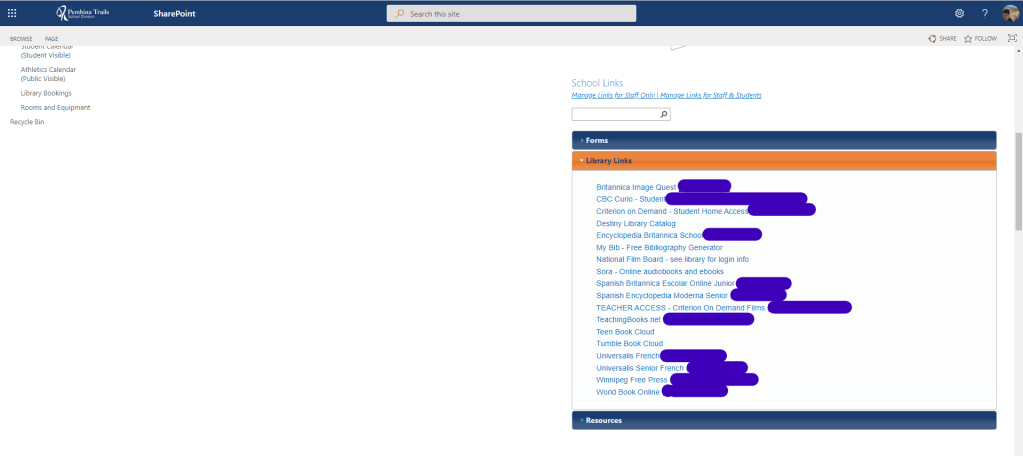

Available to access through these two locations are the following:
- Encyclopedia Britannica School (along with French and Spanish editions)
- Britannica Image Quest
- World Book Online
- Teachingbooks.net (teacher reference)
- NFB Canvas
- Criterion on Demand
- CBC Curio
- Destiny Collections built on curricular topics/interest
- Magazines through our Overdrive/SORA subscription
- Digital access to the Winnipeg Free Press
Areas of Improvement
User Feedback
“Libraries build collections based on what they think faculty and students need”
(Riedling & Houston, 2019, p. 4).
If this is to be truly the case, more time collecting feedback from clientele (both students and faculty) needs to become a focus. This will allow us to meet their needs and encourage growth and development of pedagogy and information literacy more adequately.
Weeding and Collection Development
The average age of materials remaining in the reference collection is 17 years (Follett Destiny, 2022). While this is okay for materials of historical relevance, for most this is inappropriate. Those marked above should be weeded from the collection and replaced if there is adequate demand and/or an online option is not suitable. New materials should be purchased based on user feedback, with emphasis placed on highly browsable ones. Popular titles, like the Guinness Book of World Records should be bought in duplicate – one for the circulating collection, and the other for Reference. When considerations are being made for adding resources to our collection, Riedling and Houston’s criteria for that format will be utilized.
Location and Physical Space
Currently, the remaining parts of the reference collection sit on the bottom of a shelf at the end of the non-fiction collection; a nondescript and unmarked location, suitable for a part of the collection that has been sadly left behind. According to AIL criteria, this meets ‘below standard’ criteria (Canadian Association of School Libraries, 2006, p. 42). While virtual materials are available, they should be curated and advertised more prominently, which could be a prominent feature in a designated reference section.
Philosophy
The most utilized materials in the reference collection are the ones that encourage discovery and collaborative use. Physical materials should be selected to encourage and inspire inquiry and research on topics of student interest. Materials (both physical and digital) should be selected to inspire “questioning, thoughtful investigating, making sense of new information, and developing new understandings.” A section that encourages inquiry also supports a pedagogical shift towards constructivism, where learners build their own meaning through a teacher supported environment that motivates students to question and discover rather than simply retain information (Stripling, 2008, p. 50).
Effective Collaboration at Division Level
Many virtual reference resources are prohibitively expensive. Access to Middle School Databases would best (and more equitably) be achieved if purchased at a division level, rather than on a per school basis.
Digital Curation
For parts of the collection that are best served by digital means, these should be curated and organized in a way that allows for easy access by both teachers and students. This allows our clientele to access vetted materials that they might not discover on their own. Curation is about getting our students to quality content without throwing them into the wilds of the internet (Valenza, 2017). Students are familiar with Destiny Collections from genre-study collections, so this could easily be carried forward into content area pathfinders.
Connect with the Public Library
The pandemic has been challenging in a lot of ways, but one benefit has been that the Winnipeg Public Library have created an online membership option that does not require going in to a branch to complete. This gives students access to all virtual databases, audiobooks and eBooks offered by the WPL (Winnipeg Public Library, n.d. – b).
Where We Will Be – The Improvement Plan
Follow the link in the caption below to view an interactive vision for what an Inquiry and Reference Station (goal 6) could look like in the @aallibrary! Click on the green and red buttons to learn more about what this will look like in the future.
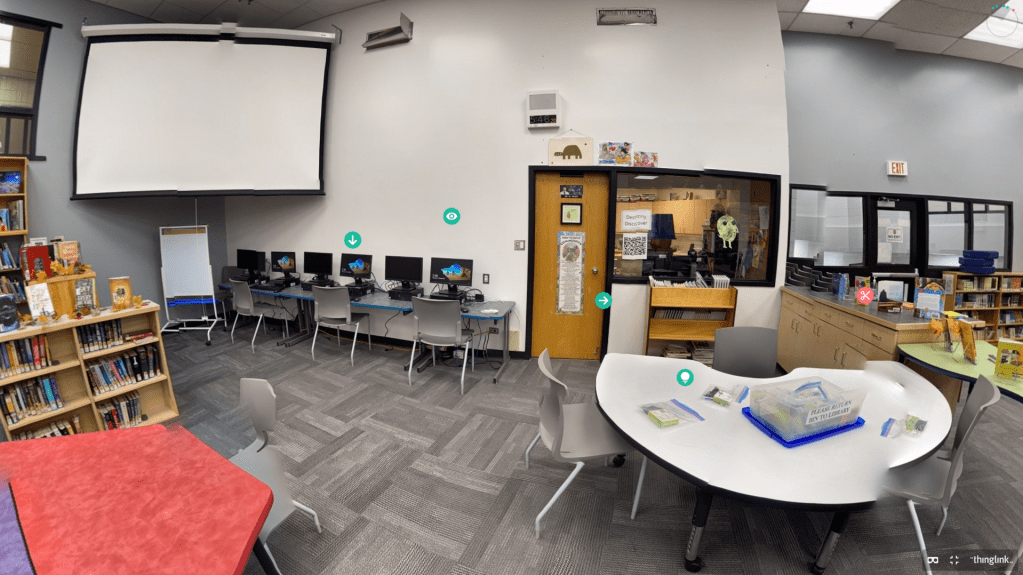
Conclusion
The @aallibrary has significant room for improvement in terms of its reference collection. The above seeks to balance the importance of physical browsing, opportunities for collaboration, curricular demands, student interest, and financial constraints into a plan that once implemented will ensure the continued development of informationally literate community members with access to both a strong reference collection and reference services. From next year forward, an annual budget line will be established to continually enrich the physical collection. The only one time expense is the building/purchasing of shelves to house our new Inquiry and Reference section prominently. These steps will help ensure that Reference doesn’t fall into disrepair again.
References
Canadian Association for School Libraries. (2006). Achieving information literacy; standards for school library programs in Canada (M. Asselin, J. L. Branch, & D. Oberg, Eds.). https://accessola.com/wp-content/uploads/2020/08/2003-AchievingInfoLiteracy.pdf
Follett Destiny. (2022). Collection Statistics – Summary.
Stripling, B. (2008). Inquiry: Inquiring minds want to know. School Library Media Activities Monthly, 25(1), 50–52.
Texas State Library and Archives Commission, & Larson, J. (2012). CREW: A weeding manual for modern libraries. https://www.tsl.texas.gov/sites/default/files/public/tslac/ld/ld/pubs/crew/crewmethod12.pdf
University of British Columbia. (n.d.). [Lecture notes Lesson 1: Information Literacy and Reference Services in Schools]. Teacher-Librarianship, University of British Columbia. https://canvas.ubc.ca
Valenza, J. (2017, July 5). Curation situations: Let us count the ways. NeverEndingSearch Blog; School Library Journal. https://blogs.slj.com/neverendingsearch/2017/07/05/curation-situations-let-us-count-the-ways/
Winnipeg Public Library. (n.d.-a). A-Z Digital Library services. WPL InfoGuides. Retrieved March 30, 2022, from https://guides.wpl.winnipeg.ca/az.php
Winnipeg Public Library. (n.d.-b). Online Registration. Retrieved March 30, 2022, from https://winca.ent.sirsidynix.net/client/en_US/default/search/registration/mill/HZWS/true?dt=list
